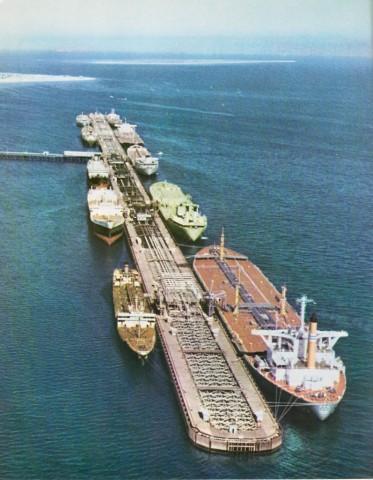
Sanctions on Iranian oil exports have strained the country’s already fragile economy.
Because of sanctions and a host of other fundamental issues, the newly-elected Iranian government faces serious economic challenges — including a shrinking economy, double-digit inflation, and high unemployment — that it will need to overcome in order to fulfill the high hopes for reform that led to its unexpected victory at the polls in June.
With the latest round of P5+1 talks coming to a close last week, and a new round scheduled in early November, the state of negotiations between Iran and the West have been closely followed for any signs of a sanctions deal and what terms that deal might include. But whatever happens with the sanctions, Iran’s underlying economic problems urgently need to be addressed.
Last week, the Center for International Private Enterprise (CIPE) hosted Bijan Khajehpour, Managing Director of Atieh International, for a discussion on the economic challenges facing new Iranian President Hassan Rouhani. The event provided CIPE staff and guests with a look inside the Rouhani administration, the economic challenges facing Iran, and policy recommendations that could help overcome these challenges.
The latest report by the World Bank, confirmed by Iran’s central bank, puts the annual inflation rate at over 40 percent. With numbers like these, it is easy to see why there has been such a concentrated push by Iran to reach a comprehensive agreement with the United States and the West on sanctions relief. These statistics, along with a myriad of other negative indicators, explain President Rouhani’s urgency in trying to resolve outstanding issues with the international community.
While all parties understand that any immediate easing of sanctions may prove elusive, Rouhani’s economic team plans to improve economic performance in the short and medium term by implementing a list of new initiatives, including:
- Shifting cash handout policies towards non-cash transactions
- Giving more independence to the Central Bank of Iran
- Reviving the Management and Planning Organization which was dissolved in 2005
- Empowering domestic production through tax incentives
- Implementing the “law for the continuous improvement of the business environment” and “pro-GDP growth” policies of the 5th five-year plan
This list, which is included in Rouhani’s domestic agenda to rescue the country’s “sick” economy, is just part of a larger slate of planned economic reforms, which include tackling this year’s budget deficit, ending the multiple exchange rate regime, and curbing inflation. Subsidy reforms and other initiatives coupled with increased Central Bank independence will help curb inflation and stabilize the economy in the short to medium term. Obviously, many of these initiatives are highly dependent on a deal being reached with the P5+1.
The last point is also notable as Rouhani has expressed interest in implementing the “Law for the Continuous Improvement of the Business Environment,” which aims to alleviate some of the burden of regulation on the private sector. Rouhani has included several notable individuals from the private sector in his inner circle, including, Mohammad Nahavandian as his Chief of Staff. Nahavandian, who currently serves as the President of the Iran Chamber of Commerce, is a strong advocate for these reforms: in fact, the Iran Chamber of Commerce proposed this law.
A legal framework allowing for a more active private sector role in the economy was one of the major developments of the privatization decree issued by the previous government, which called for economic management to be transferred to the private sector while the government restricted itself to policy-making and regulatory roles. However, the legal framework for a private sector can only go so far. There needs to be a way to incentivize business and encourage investment.
In case you were wondering, the pro-GDP growth policies of the 5th five year-plan, include:
Achieving a sustainable and vibrant economic growth at a rate of at least 8% of GDP with:
a) A development of investment through a reduction of the savings gap, i.e., investment while maintaining the proportion of savings to GDP at least 40% and attracting sources of foreign investment
b) Raising the rate of profit in economic growth by a third by the end of the Fifth Plan
c) Improving the country’s trade atmosphere based on a stabilization of the macroeconomic atmosphere, providing the necessary communication, information, legal, and scientific and technological substructure, reducing macroeconomic risk, regularly preparing figures and information to society in a transparent and systematic fashion
d) Strengthening and developing a standard national system
The role that the sanctions play on the Iranian economy is severe, and without a deal with the international community, Iranians will continue to suffer from high inflation, rising unemployment, and an unstable budget deficit.
In the short term, Hassan Rouhani’s election win has created optimism among private sector stakeholders, and a hope that he will alleviate some of the issues caused by the sanctions. However, without the right reforms to the business environment in Iran, the private sector will continue to be suffocated by cumbersome regulation, corruption, and lack of investor confidence.
Brandon Nickerson is Program Assistant for the Middle East & North Africa at CIPE.

